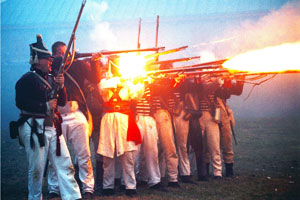The British Government has run out of money and rather than have the soldiers who have fought in the War of 1812 return home, they decide to offer them land in the new country. This action guarantees a standing army to protect Upper Canada in the event the Americans invade again and sees the development of new towns.
-
About Anne Martin

Since the mid 1970s, producer/host, Anne Martin, has been bringing stories to life through the medium of television. She thrives on tracking down the unusual and her work has encompassed history, geology, heritage and a positive outlook on the world around us. Read more about Anne Martin.
-
Recent Posts
Categories
Archives
- June 2015
- May 2015
- April 2015
- March 2015
- February 2015
- December 2014
- November 2014
- October 2014
- September 2014
- August 2014
- July 2014
- June 2014
- May 2014
- April 2014
- March 2014
- February 2014
- January 2014
- November 2013
- October 2013
- September 2013
- August 2013
- July 2013
- June 2013
- May 2013
- April 2013
- March 2013
- February 2013
- January 2013
- December 2012
- November 2012
- October 2012
- September 2012
- August 2012
- July 2012
- June 2012
- May 2012
- April 2012
- March 2012
- January 2012
- November 2011
- October 2011
- September 2011
- August 2011
- July 2011
- June 2011
- May 2011
- April 2011
- March 2011
- February 2011


